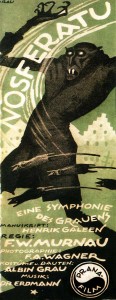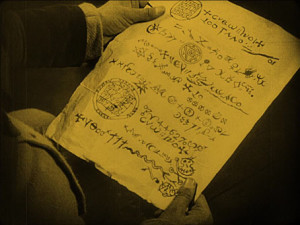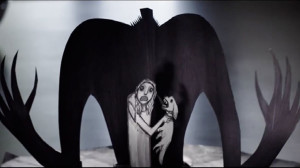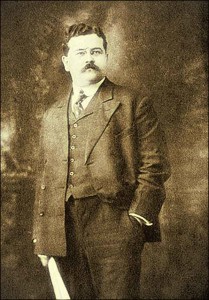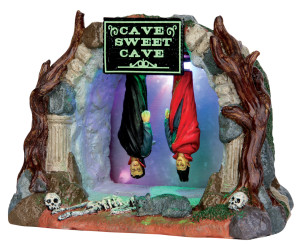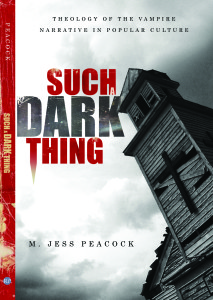 Recently Jess Peacock got in touch with me to let me know about his new book, Such a Dark Thing: Theology of the Vampire Narrative in Popular Culture (Resource Publications, 2015). It is a good read, and for those interested in exploring various theological aspects of the vampire, this book is worthwhile, bringing together an academic interest in probing deeply with a fan’s passion for the monstrous. Jess responded to some interview questions about his book in the following interview.
Recently Jess Peacock got in touch with me to let me know about his new book, Such a Dark Thing: Theology of the Vampire Narrative in Popular Culture (Resource Publications, 2015). It is a good read, and for those interested in exploring various theological aspects of the vampire, this book is worthwhile, bringing together an academic interest in probing deeply with a fan’s passion for the monstrous. Jess responded to some interview questions about his book in the following interview.
TheoFantastique: Jess, thanks for getting in touch and letting me know about Such a Dark Thing even before it was released. It was a great read. How did a horror fan from his youth, later a theologian involved in various aspects of ministry, come to develop an academic interest in vampires viewed through a theological lens?
Jess Peacock: My childhood was heavily influenced by the horror genre. I was obsessed with the entire Universal monsters franchise, Hammer films terrified and fascinated me, and I was reading Famous Monsters of Filmland at a very young age. In middle school, Fangoria magazine and the VHS revolution completed my transformation into a horror nerd. The genre really spoke to me, but nothing petrified me more than vampires. That obsession just never waned and, in all honesty, I always saw the vampire connected to theology in some manner. How could you not? Resurrection, holy water, the crucifix? It’s as if they were malevolent creatures that stepped right out of the Bible.
As I entered graduate school to study religion, it made sense to steer my research toward the vampire narrative in popular culture. Like I said, the mythos is a lens through which to analyze questions about death, the quandary of evil, and the role of religious symbols. Beyond that, I felt that the traditional narrative held a lot of potential for contemporary society. Meaning, I didn’t want to do research for the sake of research, but wanted to connect the western vampire narrative to tangible social justice efforts going on within the culture.
TheoFantastique: Among the many fine points you make in the book, you argue that not only is the vampire a figure for theological reflection on the nature of sin and evil, but you also connect it to conceptions of the divine in the Judeo-Christian tradition. This will be a bitter pill to swallow for conservative Christians who tend to hold to a sanitized version of their faith tradition. How do you see the vampire and the more general concept of the monstrous connecting to an understanding of God?
Jess Peacock: In all honesty, while I didn’t write the book to annoy conservative Christians, many of them probably wouldn’t like Such a Dark Thing. I am not anti-religion, and I make a case within the book for the potential of religion to be a force for justice within society. I am, however, anti-orthodoxy…anti-fundamentalism, and many of my conclusions skew wildly from conservative Christian dogma. Having said that, and to your question, it is undeniable that the vampire has often stood as a theophany within literature and cinema. The figure still exists as a powerful representation of topics including sin, redemption, evil, and death. Perhaps more controversial, the vampire and other fictional representations of the monstrous open a symbolic window onto the issue of theodicy, as well as shedding light on what could be interpreted in Scripture as the horror or monstrousness of God.
Reading the Hebrew Bible, it doesn’t take long to understand that Yahweh can be pretty scary. Fear is a common and stated tool of influence wielded by the Divine over humanity, and as such God comes to be seen less as a nurturer and more as a mercurial cosmic overlord who demands worship and faithfulness…or else. Many overlook the fact that in the narrative of the Egyptian plagues Yahweh is called “the Destroyer.” That’s pretty frightening to me.
TheoFantastique: You speak in the book about “interreligious horror,” and the possibility that the vampire might evolve beyond Christian symbolism and particularism. How might the vampire rooted in different religious and irreligious ideas be of value in a pluralist society?
Jess Peacock: This is a difficult question to answer without delving at length into the content of the book. But in a nutshell, I wanted to look at how the increasingly deemphasized Christian symbolism within the vampire narrative might be reflective of the waning influence of religion in the wider culture. And while that might be alarming to some, it could provide an opportunity for a spiritual revolution for others.
I would argue that the traditional view of theism is no longer needed by society, and I think we’re definitely seeing this reflected in irreligious vampire narratives from Blade to Twilight. Rather than this being a portent of the death of faith, the contemporary vampire mythos could be viewed as a symbol of a new theology, one of transcendence over immanence. In other words, the community creates and interprets God versus having to obey morals and precepts stemming from an authoritarian, unseen, and unquestioned deity. This reversal, that of a community influencing the Divine versus a “God said it, that settles it” dynamic, creates a safe and imaginative space to discuss theological and social issues without the threat of the inflexibility of religious exceptionalism or biblical literalism.
TheoFantastique: Another major idea of yours is that the vampire can serve as a symbol of resistance and liberation. You mention this in connection with liberation theology. One could argue that resistance and liberation is one facet of the so-called “war on terror.” Given our present debates over religion and violence, have you given any thought as to how the vampire might contribute to our reflection on these important global realities?
Jess Peacock: Absolutely. As I alluded to earlier, to some extent I use the vampire narrative to discuss at what point gods become monsters. With regard to the “war on terror,” we can use the same analytical process to discuss when a so-called exceptional nation turns into a monstrous one. When does the United States cross the line between justice and terror, displaying shocking ambivalence toward the innocent people victimized by its actions? When, in our search for monsters, do we become what we hate? I feel that, with our record of mass drone strikes and an illegal torture program, this is a question long overdue and one still not sufficiently publicly addressed and debated. And while we might consider our “war” to be a righteous one fueled by redemptive violence, our monstrous actions inevitably breeds more monsters, much as a vampire sires more vampires.
TheoFantastique: Jess, thanks again for the book and for the opportunity to drink deeply from the well of the vampire and the theological.
Related posts:
“The Theology of Dracula: Reading the Book of Stoker as Sacred Text”
“Book Review: The Vampire Defanged”
“Leonard Primiano: True Blood, Post-9/11 Spirituality, and ‘Vernacular Religion'”
“Matt Cardin: ‘Religion and the Vampire’ in The Encyclopedia of the Vampire”
“Christians and Vampire Mythology”
“Mary Y. Hallab: Vampire God”
“Titus Hjelm – From Demonic to Genetic: The Rise and Fall of Religion in Vampire Film”
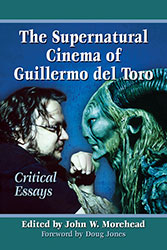 The Supernatural Cinema of Guillermo del Toro
The Supernatural Cinema of Guillermo del Toro